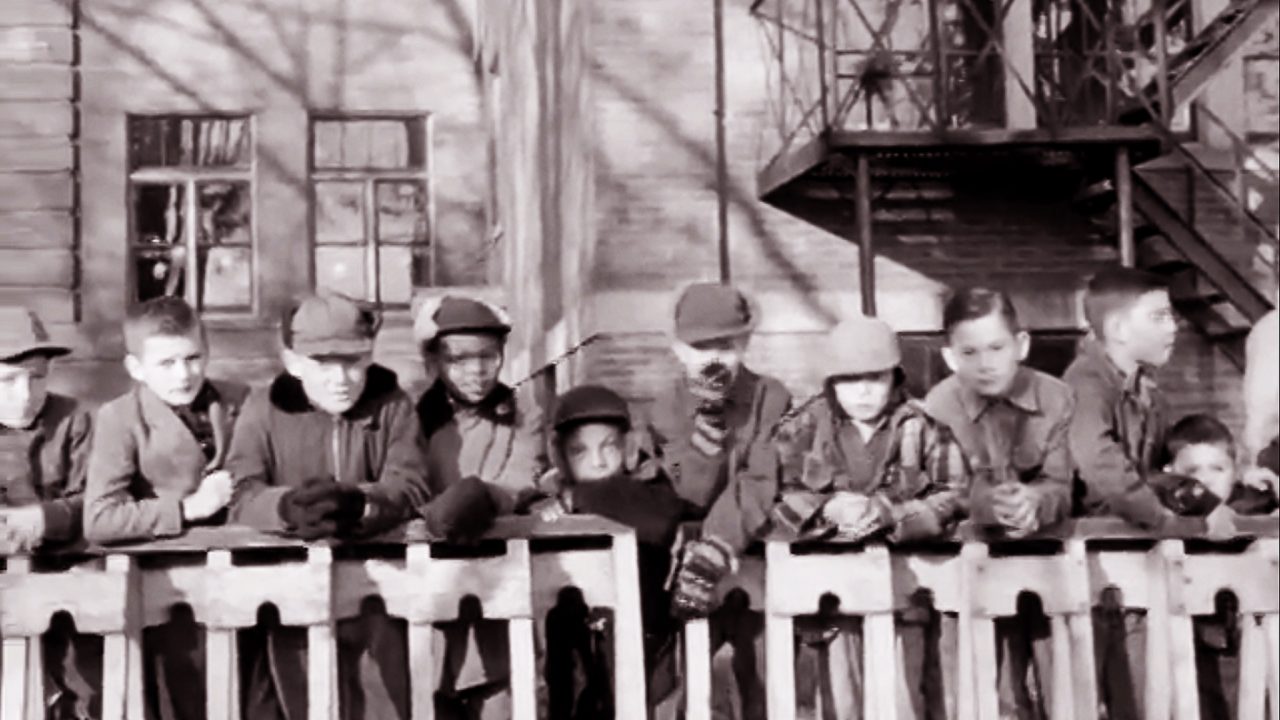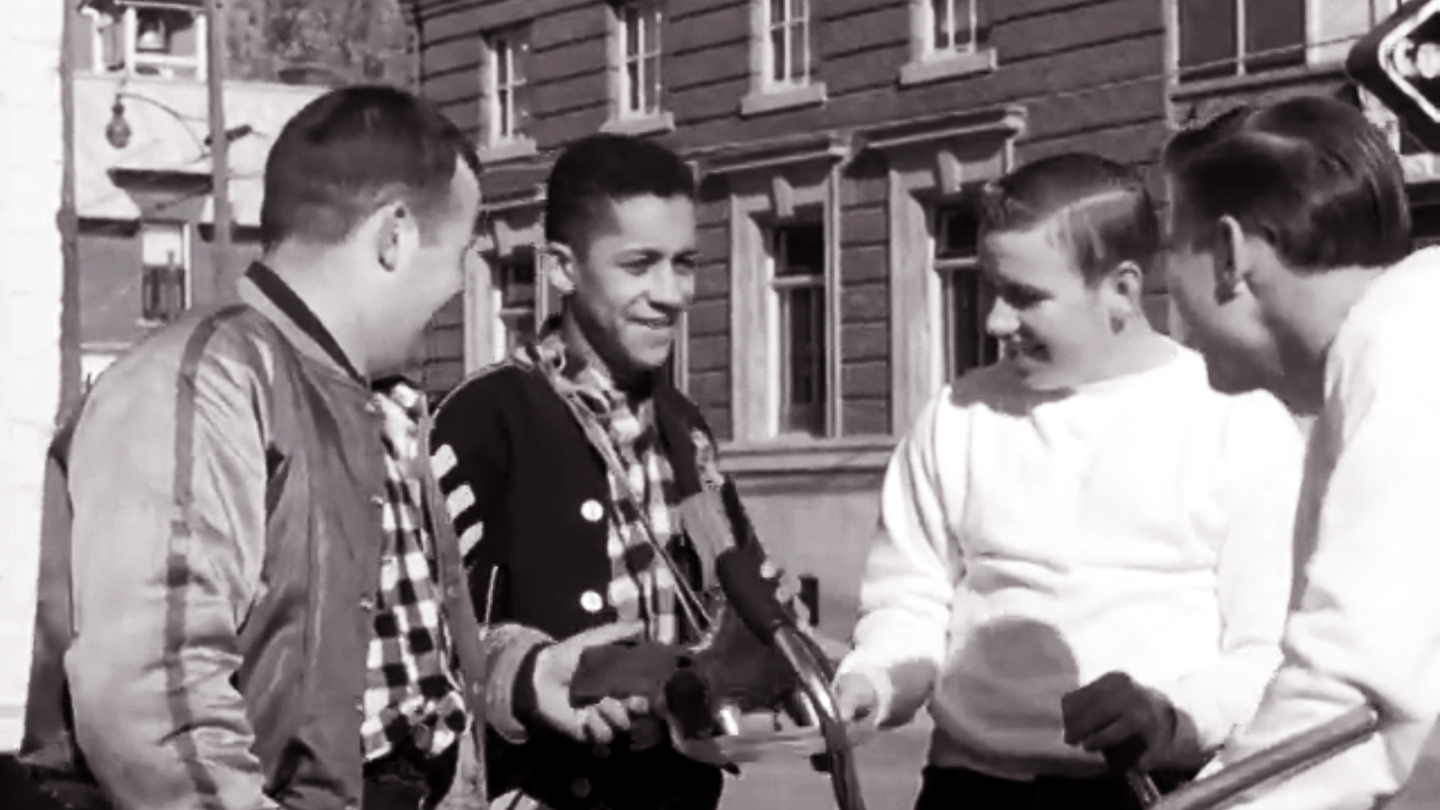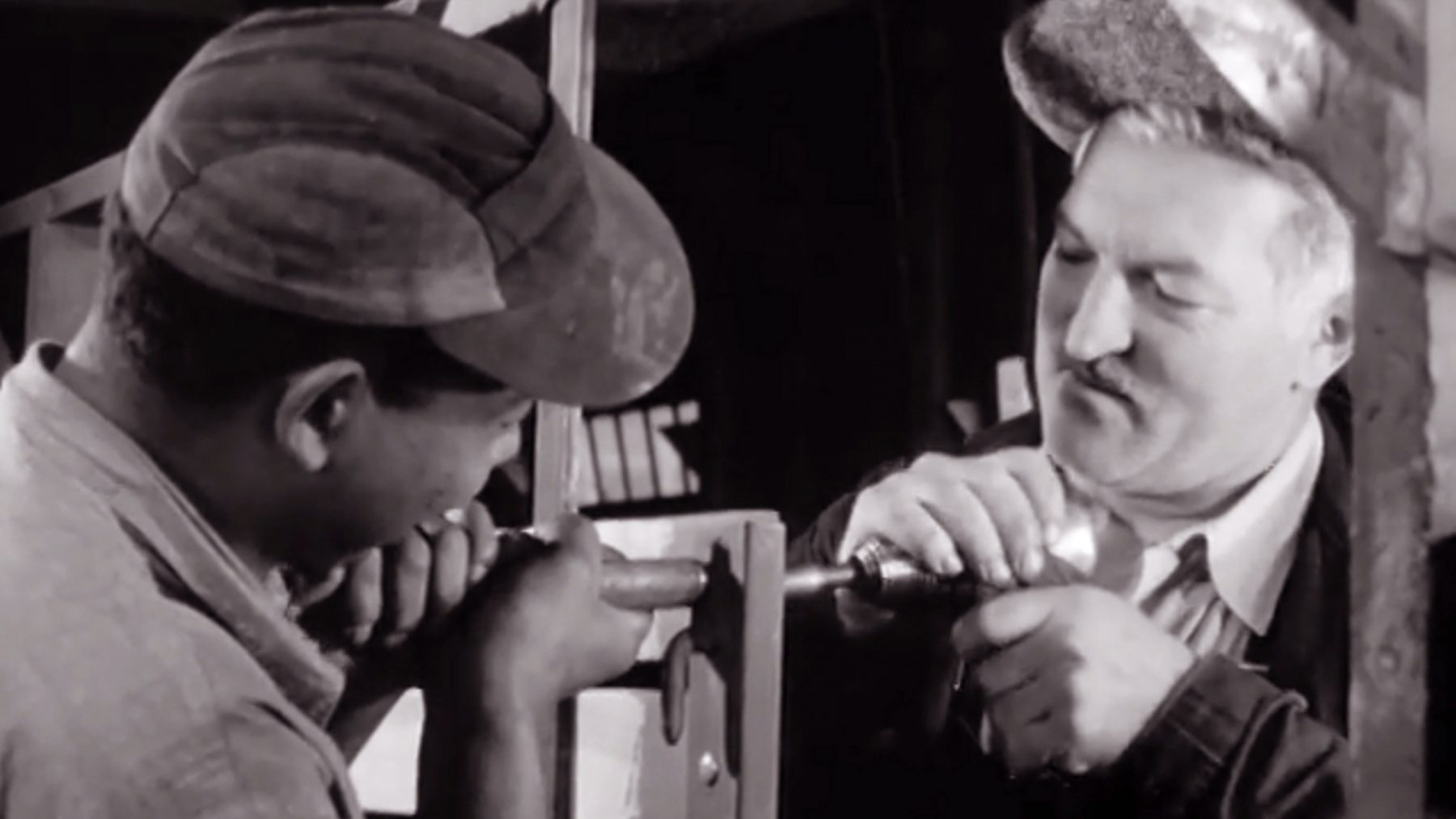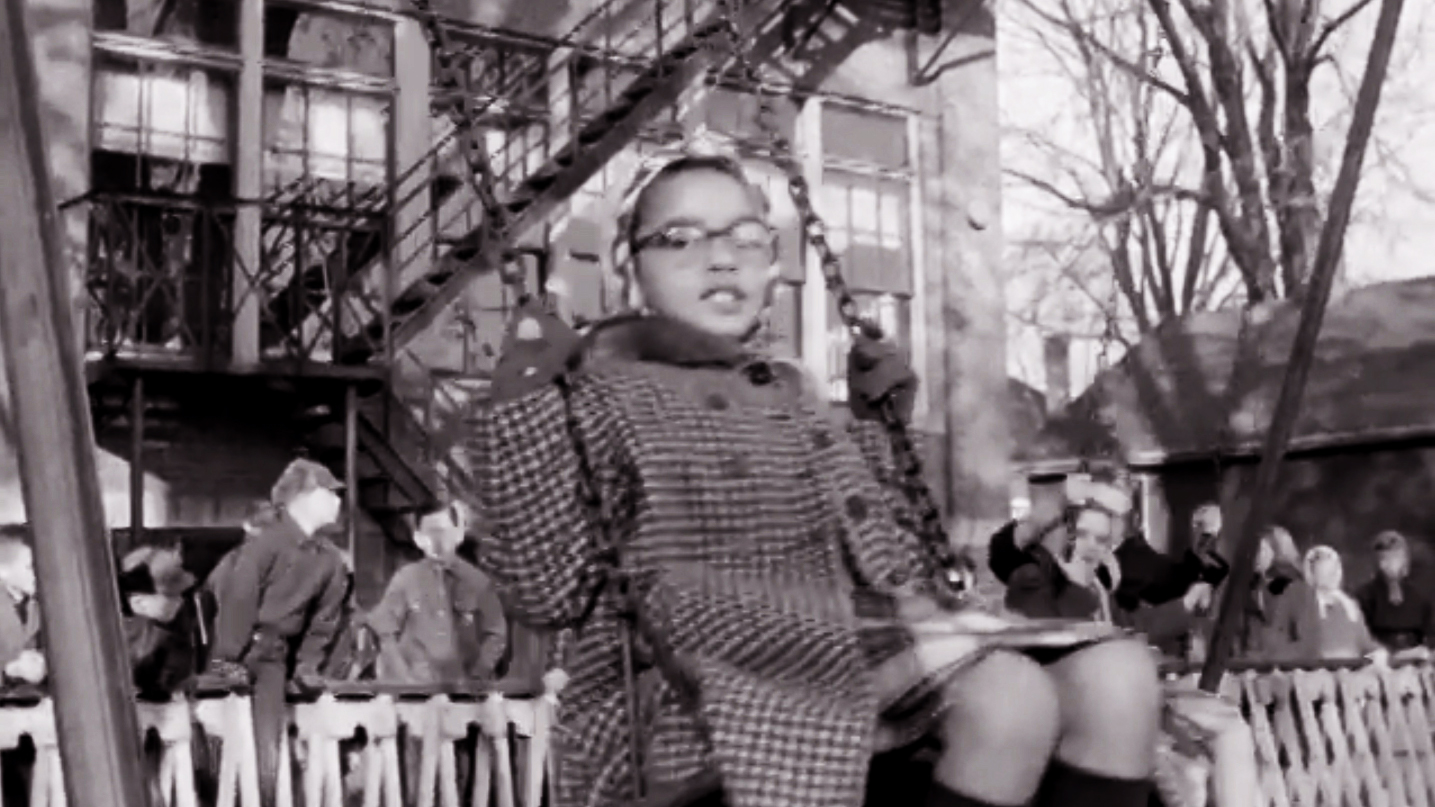
Dresden Story: Racism in 1950s Canada | Curator’s Perspective
Dresden Story: Racism in 1950s Canada | Curator’s Perspective
On the Spot was the first series made by the NFB specifically for television. It was launched on October 6, 1953, on the CBC and ran for two seasons.
Most of the episodes were simple news reports, with an on-camera host commenting on some aspect of life in Canada and interviewing people. On the whole, the episodes were pleasant and light, consisting of basically innocuous stories. There is, however, one episode that is anything but light and pleasant. It is this episode, entitled Dresden Story (broadcast on December 19th, 1954), that I’ve written about in today’s blog post.
For one thing, this was the first NFB production that dealt directly with racial discrimination in the country.
This story begins in the town of Dresden, Ontario, where resident Hugh Burnett (spelled “Burnette” in the film) was refused service in a local restaurant because he was Black. He wrote to the federal justice minister to complain and was told that it was not illegal to refuse service to anyone! Burnett pursued his petitioning and lobbying, and was informed by Leslie Frost, the Premier of Ontario, that racism was not prevalent in Canada.
All this changed in the spring of 1954, when Frost introduced the Fair Accommodations Practices Act for Ontario, which made it “a statutory offence to discriminate in public places on grounds of race, creed, color, nationality, ancestry or place of origin.” Still, there were some restaurant owners who refused service to several Black and Asian patrons in Dresden.
The government of Ontario refused to lay charges but, by that time, the story had garnered national headlines, and the premier had no choice but to allow a trial. Incredibly, the judge sided with the racist restaurant owners! Burnett was vilified and referred to as a communist. There was even an attempt to burn his house down.
It was in the middle of this media firestorm that the NFB sent its On the Spot film crew to Dresden to get the story.
The film starts with an introduction to the town. We are told that 12 percent of the town’s population of 2,000 people is Black (the film calls them “coloured”). We are told that they (the film crew) found no discrimination in the town mill or in the schools. The narrator points out that there is no segregation and that people live where they choose. All of this is accompanied by shots of people intermingling. Some of it looks a bit forced, but the shots of the children together seem genuine. The first signs of separation are evident when we’re shown churches and told that no Black residents attend the “white” Protestant and Catholic churches.
Interestingly, we find out that Dresden was the home of Josiah Henson, who escaped slavery in the USA in 1830. His story was the inspiration for Harriet Beecher Stowe’s novel Uncle Tom’s Cabin. Host Gordon Burwash then interviews a Black high school student and three white residents, including the local Catholic priest and a dentist. The priest and dentist both suggest that it is best to let the locals handle the problem. Burwash then interviews an unnamed man who claims that Canada is on the verge of civil war and that the communists and Jews are behind the “trouble.”
The last interview is of Mrs. Burnett, who says that the Black community needs to fight for its rights or forever be second-class citizens.
At this point, the NFB offered its cameras to the citizens of the town, who accepted on the stipulation that the two groups meet separately to encourage frank and open discussions. Burwash then had discussions with the two panels, each consisting of six representatives of their respective communities. The Black panel included Hugh Burnett, who is easily the most well-spoken of both panels, as well as being the most at ease.
What follows constitutes the bulk of the film. Burwash asks the same questions to both panels and their answers are intercut. Not surprisingly, the responses diverge considerably. The white panel felt that racial discrimination was only a recent phenomenon, while the Black panel relate how they’ve lived with it their entire lives. The white panel are very quick to blame the communists for fomenting trouble, eventually grudgingly accepting that there were some bigots in the town.
The big reveal, as far as I am concerned, is that the white panel felt that the source of the discrimination was the fear of intermarriage. Even the pastor of the Baptist church said that it should be discouraged. Fortunately, there were some positive comments from both sides. Members of both panels said that it was important to get both sides together to talk.
Dresden Story, Julian Biggs, provided by the National Film Board of Canada
Burwash does an excellent job of mediating the conversation and asking the hard questions. He never talks down to anybody and makes sure that everyone gets the chance to speak. The film ends with him commenting that the facts have been presented and that the story will continue.
To finish the story, it turns out that the restaurant owners were finally convicted in May 1956. It was the first time in Canadian history that racial equality was declared a civil right.
Sixty-five-plus years later, it is a little shocking to watch some parts of this documentary. The blatant racism of some people is jarring. I am encouraged that the NFB felt it was important to spotlight this story. I am also encouraged that some of the panel members expressed some positive ideas and a willingness to work on the problem together.
So much has changed in Canada in the years that followed the broadcast of this film, mostly for the better. While, sadly, racial discrimination is still prevalent today, watching a film like this makes me realize just how far we’ve come since then, and how much progress we’ve made as a society.
Please visit our Black Communities in Canada channel here to watch other engaging films.







Henson’s life and the community of Dawn was transformed after the publication of Stowe’s
Uncle Tom’s Cabin in which the horrors of slavery were exposed to mainstream media through the vehicle of literature. Criticism of Uncle Tom’s Cabin dually arose from all sides of the slavery debate. Press reviews doubted the accuracy of Stowe’s portrayal of slavery. In particular, critics questioned the moral stature of Tom as a believable representation of a slave. To combat the growing skepticism Stowe wrote the Key, a compilation of works that supported her account of slavery in Uncle Tom’s Cabin. One of the works she employed as evidence was the biography of Josiah Henson. Stowe found parallels with his biography to that of her literary work but never publicly declared him the as the real “Tom.” However, through Henson’s biographical ghostwriters and the later admission of Henson that he indeed was the literary icon, the public mind construed Henson as Uncle Tom.